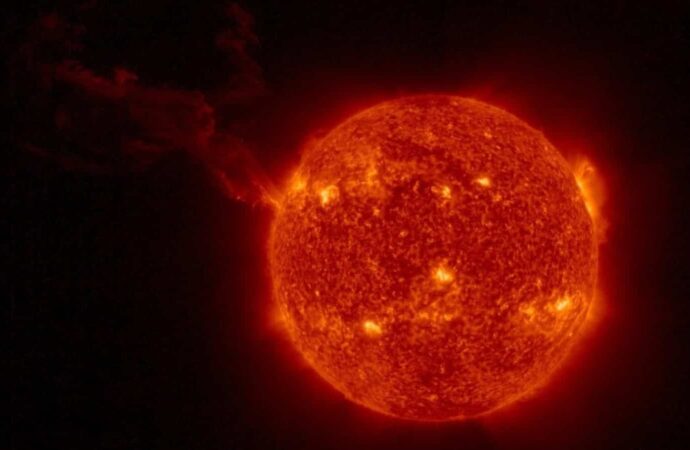Understanding the Impact of Rising Sunspot Activity
The recent surge in sunspot activity has raised concerns about the potential for solar storms and their impact on Earth. Sunspots, which are regions of unstable magnetic fields on the surface of the Sun, are directly related to the intensity of the solar peak. As the number of sunspots increases, so does the likelihood of solar storms, which are caused by coronal mass ejections (CME) particles released during solar eruptions.
The Threat of M-class Solar Flares
NASA’s Solar Dynamics Observatory (SDO) has identified two particularly dangerous sunspots, AR3511 and AR3513, which have been observed to have unstable “beta-gamma” fields. This acceleration at the top of the coronal loops indicates the potential for these sunspots to hurl out M-class solar flares towards Earth. M-class solar flares, while moderate in intensity, have the potential to cause brief radio blackouts when they impact Earth’s magnetic field. This can disrupt radio communications and the power grid, highlighting the potential impact of solar activity on our daily lives.
Monitoring Solar Activity with NASA’s SDO
To track and monitor solar activity, NASA’s Solar Dynamics Observatory (SDO) utilizes three crucial instruments. The Helioseismic and Magnetic Imager (HMI) takes high-resolution measurements of the longitudinal and vector magnetic field over the entire visible solar disk. The Extreme Ultraviolet Variability Experiment (EVE) measures the Sun’s extreme ultraviolet irradiance, while the Atmospheric Imaging Assembly (AIA) provides continuous full-disk observations of the solar chromosphere and corona in seven extreme ultraviolet (EUV) channels. These instruments play a vital role in collecting data on various solar activities, allowing scientists to better understand and predict solar events that could impact Earth.
As we continue to observe and monitor the activity of sunspots AR3511 and AR3513, it is crucial to remain vigilant and prepared for potential solar flares and their impact on our planet. The work of NASA’s Solar Dynamics Observatory serves as a critical tool in understanding and predicting solar activity, ultimately contributing to our ability to mitigate the potential impacts of solar storms on Earth.









